We often don’t think about our gutters, which means they’re doing their job effectively—but if you’ve noticed they’re getting clogged frequently or are unable to handle the amount of water coming down, it may be time to rethink the size of your gutters. Below, we’ll go over the types and sizes of gutters and how you can identify the right size for your home.
Gutter maintenance can be intimidating, but it doesn’t have to be. Our pros at Guns N Hoses have assisted countless homeowners with gutter repairs or replacements, and we’re happy to share our knowledge with you. Contact us for a complimentary consultation!
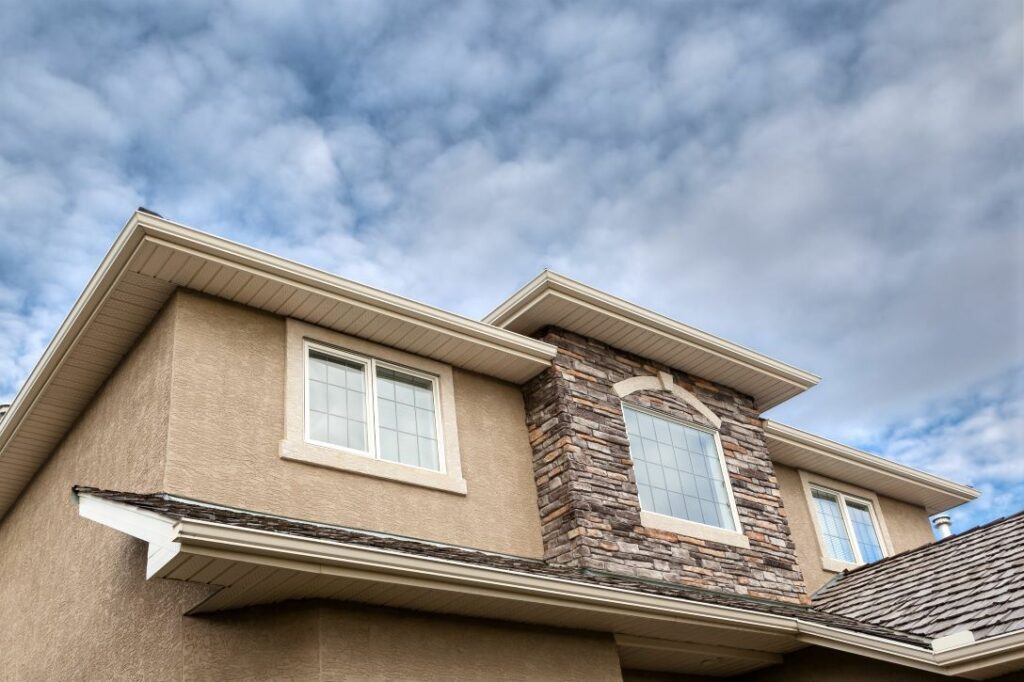
Types of Gutters
There are four common materials used for gutters, each with their own advantages and disadvantages. These include:
- Aluminum—aluminum gutters boast a lifespan of up to 30 years if maintained properly, are low maintenance, and resistant to corrosion. Additionally, this material is highly resistant to extreme temperatures (like the highs and lows we see throughout the seasons in Alberta).
- PVC—vinyl, or PVC, is often used due to its wide variety of colour options and is low in cost. However, PVC material can easily become brittle in very cold temperatures, causing it to break or crack if snow or other things fall on it (meaning more frequent repair costs).
- Galvanized Steel—galvanized steel is known for its durability and ability to resist corrosion. However, if not properly maintained, it can rust, leading to costly repairs.
- Copper—the durability of copper and its non-corrosive properties make this material highly sought after among those living by the sea (since salty air can cause rapid corrosion of other common gutter materials). However, copper is one of the most expensive materials to use for your gutters and may not be necessary for Alberta’s dry inland climate.
Styles of Gutters
There are 2 main styles of gutters used on residential properties:
- K-style: the most common gutters come in the K-style as they’re affordable and resemble a home’s crown molding, which provides extra aesthetic appeal. These gutters are designed to handle high volumes of water and are extremely durable.
- Half-round: the half-round style is seen on older homes and has a more rustic look. However, this style is often more expensive and less durable than the K-style. Half-round gutters are also less popular, as they cannot hold such large volumes of water.
Why We Choose 5-Inch Seamless Aluminum
Guns N Hoses uses 5-inch Seamless Aluminum for gutter installations. Why? As mentioned above, aluminum gutters can last up to 30 years with proper maintenance. Also, proper maintenance for these gutters is minimal and only requires cleaning out any leaves or debris when you notice them accumulating.
Aluminum gutters never need to be painted and won’t rust, making them the best choice for a ‘set and forget’ installation. We also take it one step further by using a specialty finish on the aluminum—with a guarantee of no chips, cracks, or peels for 20 years! This helps to reduce maintenance costs and increases the property value of your home.
We typically use 5” gutters in Calgary and the surrounding area (as this is considered the standard size for homes in the region). This size is adequate for the amounts of rainfall normally seen in Southern Alberta. However, other sizes are available—and since we offer custom fits for each home, it helps to know whether you might need something else.
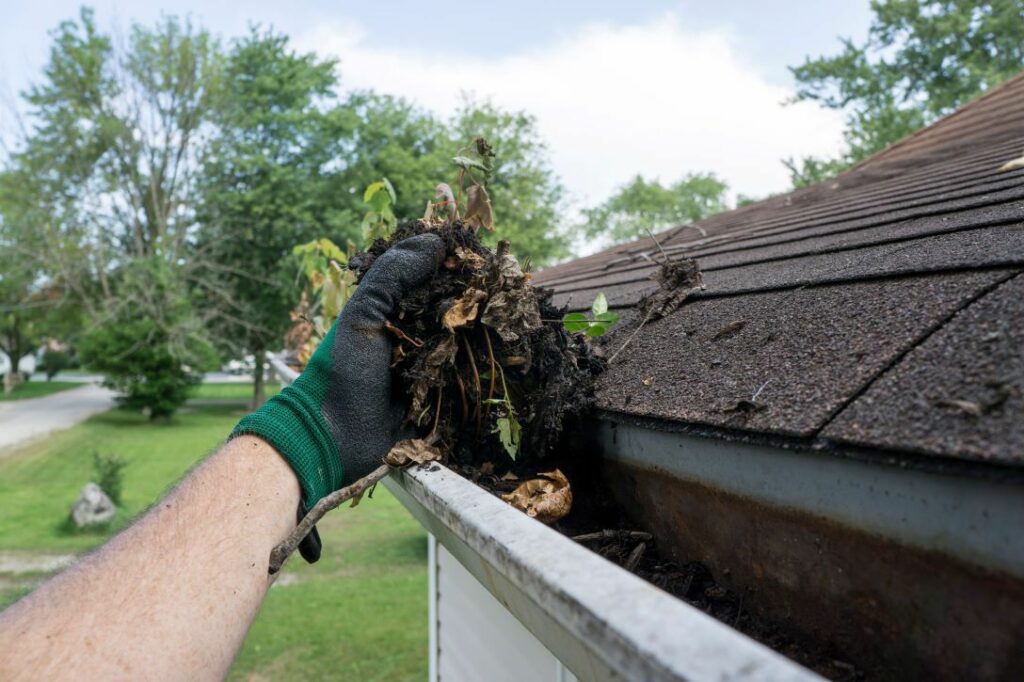
How to Determine the Right Size Gutters for Your Home
Now that we know a bit more about the types of gutters and why aluminum is the most common choice, how do you figure out what size you need? Let’s figure it out together.
Other Common Sizes For Gutters
Gutters typically come in 4 different sizes, but this depends on your home and the climate you live in. Most commonly, homes have a 5 or 6 inch gutter system installed, but other sizes can range between 4 and 7 inches.
The downspout that’s connected to the gutters, carrying the water down, also comes in 2x3 inch or 3x4 inch sizes.
Calculating Your Gutter Size
Now that we know the different types and sizes of gutters, it’s time for the big question—how do you know what size you need? Here’s how to calculate the best sized gutters for your home.
Calculate the Drainage Area of Your Roof
The first thing you’ll want to do in calculating your gutter size is to find out how much drainage area your roof has. The method you use will differ for differently built roofs:
- Simple gable-end roofs: these roofs only require two calculations to figure out the drainage size. You can do this by multiplying the length and width of each slope and adding them together.
- Intersecting or hip roofs: for roofs with more than 2 slopes, you will want to add up the area (length x width) of each slope to get the total drainage area of your roof.
Finding Your Roof Pitch & Maximum Rainfall Intensity
Once you have your total drainage area, you’ll have to account for the roof-pitch factor and the maximum rainfall intensity.
- Roof-pitch factor: the amount of rainfall collected on a roof is greater with steeper roof pitches. To measure this, use a 2-foot level and a tape measure. Holding one end of the level against the roof, make sure it is level, and measure the distance between the roof and the underside of the level at the 12-inch mark. This gap gives you the number needed to multiply for future calculations:
- A 12- or higher inch gap with a 12-inch run = 1.3
- A 9- to 11-inch gap with a 12-inch run = 1.2
- A 6- to 8-inch gap with a 12-inch run = 1.1
- A 4- to 5-inch gap with a 12-inch run = 1.05
- A flat to 3-inch gap with a 12-inch run = 1
- Maximum Rainfall Intensity: although Alberta isn’t known for extreme rain events, the province does have a maximum average of .47-inches of rain in a 60-minute period.
Gutter Sizing
So now you have your 3 numbers—the total drainage area of your roof, the roof-pitch factor, and the maximum rainfall intensity (.47in for Alberta). Using these numbers, you can now find the right size gutters for your roof.
To do this, multiply your drainage area by the roof-pitch factor and rainfall intensity—for example, if you have a 1000 sq ft. drainage area, with a 10-inch-12 pitch factor (1.2), and the rainfall intensity is .47 inches per hour, your equation would look like this: 1000 x 1.2 x .47.
Now, we know math isn’t everyone’s strong suit (especially when you’re trying to do it on the roof)—and since our pros are trained to size gutters appropriately for different homes, we’re always available to make sure you get the right size. Contact us and one of our professionals would be more than happy to help you find the ideal gutters for your home.
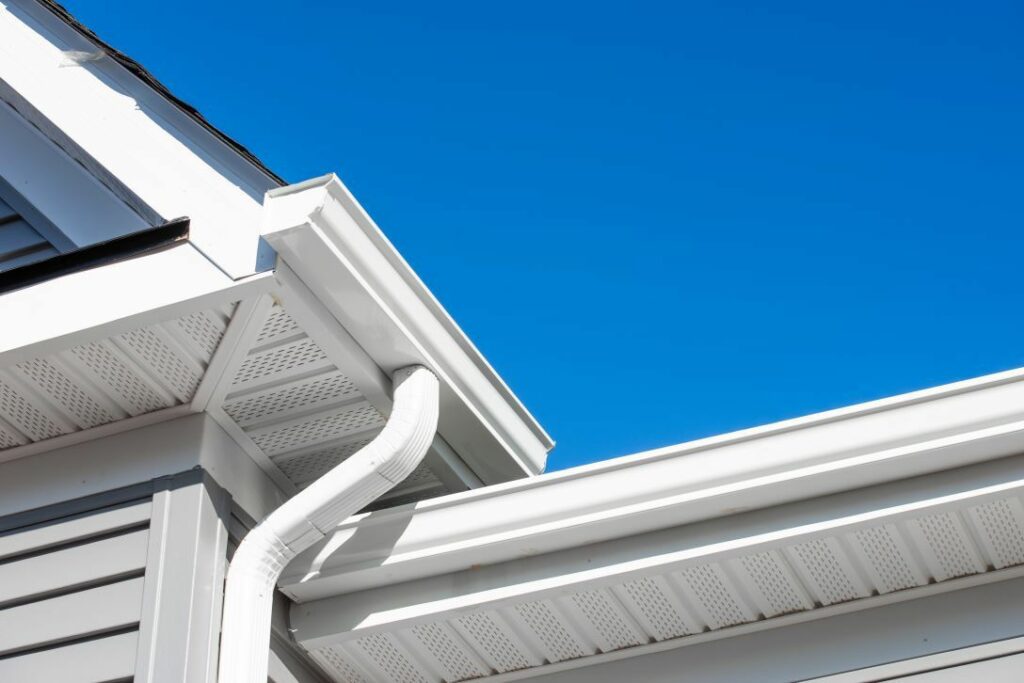
Oversized vs. Undersized Gutters
Sometimes, sizing your gutter leaves you with two options—either sizing up or sizing down. In this case, we recommend sizing up.
Benefits of Oversized Gutters
Sizing up your gutters does cost a bit more, but there are reasons it's recommended:
- Larger gutters have the ability to handle much more rainwater and debris, reducing the risk of clogging and preventing water damage.
- Larger gutters work better with more complex gutter systems and roofs and drain more efficiently.
- Upsizing your gutters can also enhance the aesthetic appeal of your home.
Drawbacks of Undersized Gutters
Although saving some money at the front end by choosing a smaller gutter size can be appealing, it does have its disadvantages. If the gutters on your home are too small for rain and debris capacities, this can increase clogging within the gutter system as it cannot drain quickly enough. This allows water to build up on your home, or fall out the gutters close to your foundation, which can cause serious water damage and require costly repairs.
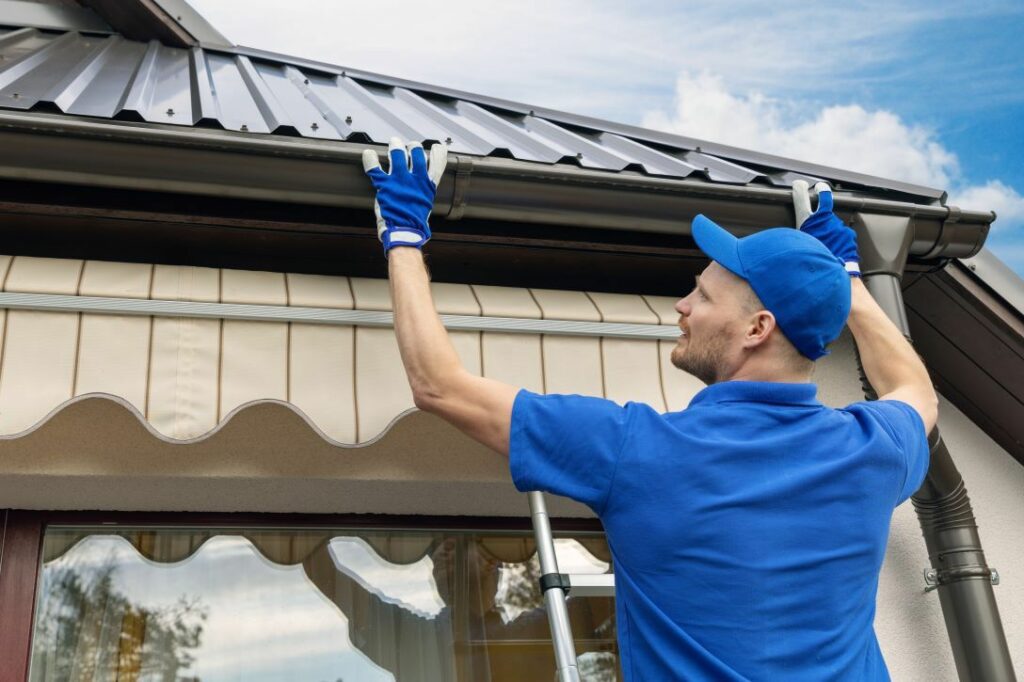
Get the Right Gutters for Your Home
Now that you have a better idea of the different kinds of gutters that exist and the size you might need for your home, you can feel confident about calling a professional to install them. Our team of experts who have serviced over 5500 homes in southern Alberta will be happy to confirm your choice or recommend the most effective drainage system for your roof. Contact us at Guns N Hoses to have your questions answered.
We all want to improve the energy efficiency of our homes. Energy-conscious living is better for the environment and helps battle the ever-rising costs of gas and electricity.
ENERGY STAR appliances and electronics lower consumption inside your home. But your home’s exterior plays a massive part in improving energy efficiency, too.
When you think about it, your roof, exterior walls, doors, and windows are the gateways for energy to flow in and out of your home. The materials used and the condition of these structures can affect the performance and the overall energy efficiency of your personal ecosystem.
Here are 7 ways your home’s exterior can improve energy efficiency and lower utility bills.
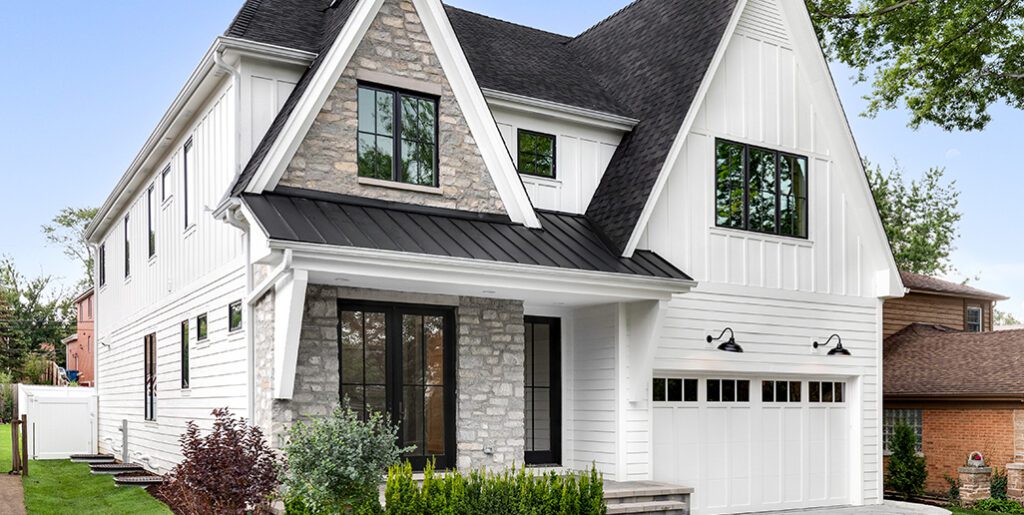
1. Roofing Materials Matter
Roof Colour Can Change More Than the Look
If you wear a black shirt on a hot day, you’ll feel warmer than someone wearing a white top. The same principle applies to roofing materials exposed to the sun. Dark roofing materials will absorb and hold more heat than light-coloured roofing materials.
So the question is, are you (and your home) usually trying to stay cool or warm? Cold climates that often require heating are better served by dark roofs that absorb more heat through the winter. This raises the temperature inside your structure and lessens the workload for your heating system.
Alternatively, homes in warmer climates are better served by light-coloured roofs. Light exteriors will better reflect heat through the hot months and improve the efficiency of your air conditioner. This is why many buildings in the Mediterranean and other hot climates are painted entirely white.
Roofing material type will also affect how much heat is reflected or maintained. Still, the colour of your roof can make a difference in regulating your home’s temperature.
Weather-Resistant Roofing Works Better
Wind can be a problem for poorly installed roofs or roof materials that aren’t rated for your climate. High-velocity winds have the power to lift and even remove shingles and other roofing materials. A damaged roof does a poor job of keeping climate-controlled air inside and the elements out of your house.
Hail damage is another common way that shingles are damaged. Roof damage can affect the performance of insulation, air conditioners, and furnaces. So make sure you consult a professional and choose the right type of roof next time you’re up for a replacement.
A rubber roofing product like Euroshield is ideal for regions that experience hailstorms and other extreme conditions. By reducing the replacement materials needed for damaged roofing, you also decrease the energy consumption used in manufacturing.
Harvest Your Own Energy with Solar Roofing
If you want to really improve your home’s energy efficiency and energy independence, install a solar roof. Outfitting your home with solar panels is expensive and requires the work of a specialized roofing contractor and an electrician.
Using harvested solar energy to power your home’s heating and electrical systems will definitely lower your utility bills. But because of the high costs of entry, solar roofing isn’t for everyone. Ask your local roofing company what products are available in your region and the ballpark costs for installation.
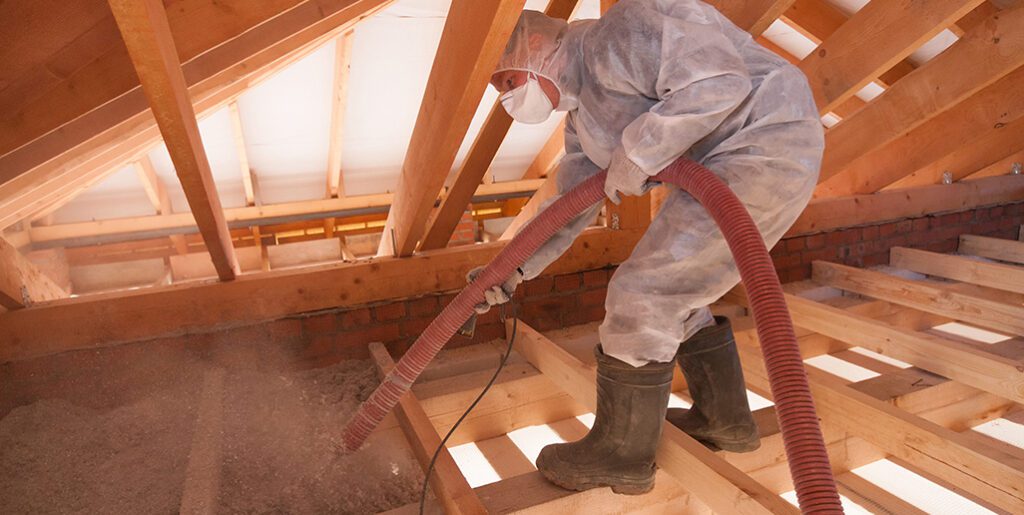
2. Excellent Insulation Helps Your Home Stay Efficient
Home insulation is any material placed in and around your home’s exterior surfaces to help regulate heat. Insulation should keep warm air inside during the winter and hot air outside during the summer.
Properly insulating all of the key areas in your home can improve energy efficiency for your heating and cooling systems. Ensure attics, exterior walls, and basement foundations are insulated with an R-value (ability to resist heat flow) suitable for your climate.
Infrared thermal imaging is one way to get a clear idea of where energy loss occurs in your attic and other areas. This technology lets you pinpoint trouble spots in your insulation and air seal or reinsulate these spaces for better energy efficiency.
Here are some more ways to make your attic energy efficient.
Control Your Climate with High-Efficiency HVAC
Once your home is adequately insulated and ready to keep the heat in, choose HVAC equipment that’s also energy efficient. Investing in a high-efficiency furnace can lower your monthly heating costs by up to 40%!
Look for certified ENERGY STAR air conditioners, furnaces, and other appliances to improve your home's energy efficiency.
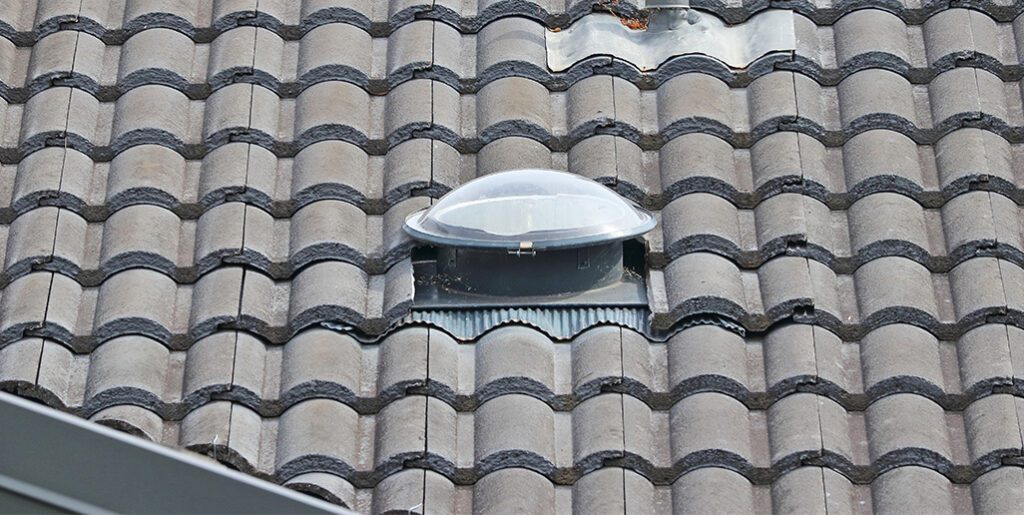
3. Solar Roof Vents Will Help Lower Bills
A critical aspect of healthy indoor air quality is ventilation. Warm air condenses once it rises to your attic, adding unwanted moisture to your insulation and roofing materials. This high humidity can damage structural materials and lead to mould and bacterial growth.
The answer: solar attic vents! These solar-powered vents use the sun’s energy to open and close, controlling temperature and humidity. Exchanging and regulating air quality with roof vents lowers the demand on your HVAC system, particularly in the summer when stagnant hot air can fill your attic.
These roof additions power themselves, improve your home’s energy efficiency, and contribute to a longer lifespan for your roofing and insulation materials.

4. Make Sure Your Gutters Are Flowing Freely
The gutters and eavestroughs hanging off your roof are there to channel water runoff to safe locations. But when these drains get clogged or blocked, it can lead to major damage and run up your utility bills.
The water that drains from your roof can be used to irrigate lawns and gardens with natural, free rainwater. Using tap water and automated sprinklers to help your grass grow costs money and extra energy.
LeafGuard is a great way to keep muck and debris out of your gutters. This product protects eavestroughs from debris and helps keep water flowing where it should be. And remember that it’s common to replace gutters and downspouts several times throughout the life of a home.
Here are some tips for fixing a leaky gutter that isn’t delivering water where you need it.
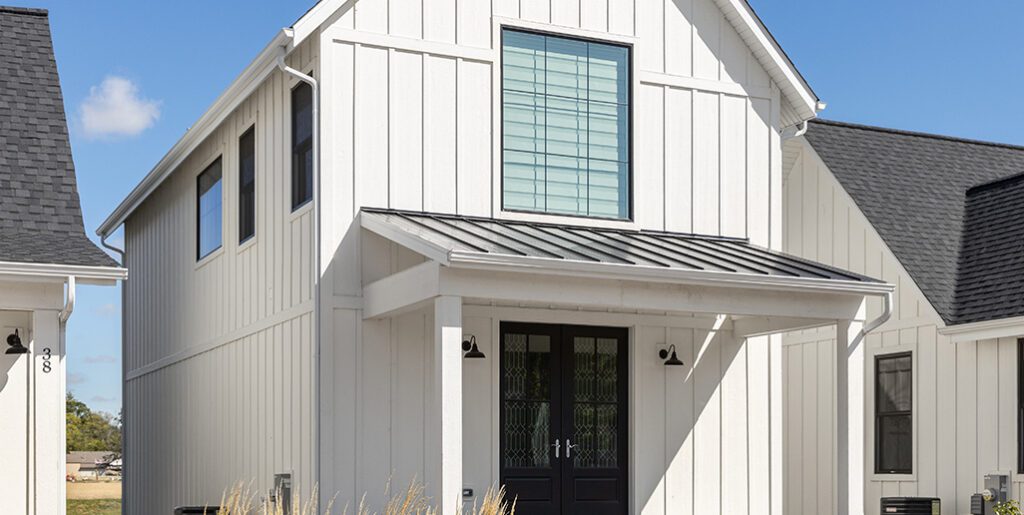
5. Keep Heat Inside with Quality Siding
The quality and condition of your siding are other factors that can help or hinder your home’s energy efficiency. No part of your home’s exterior is safe from weather damage, and siding is no exception.
Heat energy can escape through holes, cracks, and gaps in siding due to weather or aging. This is why, just like your roof, your siding should be inspected by a professional after a major hailstorm.
Siding can also improve your home’s energy efficiency just as roofing materials can—by its colour. Dark colours will absorb heat and make your home warmer; light colours reflect heat and help keep indoor temperatures down. Siding materials have their own insulation value, so work with an exterior specialist to pick a siding colour and material that helps keep your energy costs down.
Your impact on global energy efficiency can be improved when you select a recyclable siding product like Hardie boards and panels. This material is highly rated against hail and poor weather and uses recycled materials in its manufacturing.
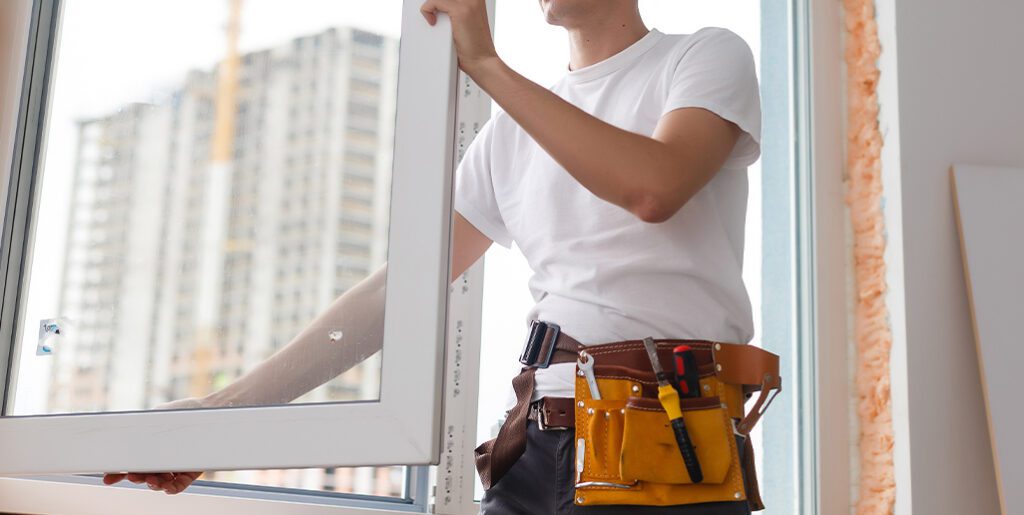
6. Conserve Consumption with Energy-Efficient Windows & Doors
If there’s a draft in your house, there’s a good chance it's coming from a window or doorway. Poorly sealed or insulated doors and windows are one of the ways your home’s energy efficiency can take a hit.
Older, single-pane windows just don’t perform very well in cold climates. Doors and windows can account for 25% of your home’s total heat loss. So upgrading these areas should be a priority if you’re looking to improve your home’s energy efficiency.
Refitting your home with energy-efficient doors and windows is the most effective way to limit heat loss in these areas. But weatherstripping windows and doors or using heat-shrink film over glass panes are a couple of less expensive solutions to prevent serious heat loss. Here are some DIY tips for keeping the heat in.

7. Install a Skylight for Added Natural Light & Heat
A skylight is a beautiful addition to any home, but it’s not just the aesthetic that will benefit your lifestyle. Skylights allow the sun to do work that your utility company would otherwise charge for.
Sun tunnels and skylights let precious natural sunlight into your home. And this sunlight provides warmth throughout the day, which means you can turn the thermostat down. If it’s summertime and you want to keep the heat out, reflective skylight windows and coatings are available.
Natural light is also an excellent excuse to flick the lights off during the day. Here’s some great info about maximizing sun exposure with a skylight, which is a great way to lower your home’s energy consumption.

Grants for Greener Homes in Alberta
You’re not the only one hoping to improve your home’s energy efficiency—the government wants to see it too! So much so, that provincial and federal governments have created rebates, grants, and bursaries for energy-conscious homeowners.
The Canada Greener Homes Initiative is designed for homeowners ready to retrofit their living space with energy-efficient upgrades. The program offers grants and interest-free loans to help with these renovations.
The Clean Energy Improvement Program (CEIP) is a provincial mandate in Alberta that helps homeowners complete energy-efficient upgrades without putting money down. The City of Calgary has more information on how this affects property owners.
We’re Committed to Increasing Efficiency
Guns N Hoses Roofing is committed to improving energy efficiency in communities across Calgary. We are proud of our partnerships with energy-conscious suppliers and encourage homeowners to consider eco-friendly exterior products such as Euroshield and Hardie Board.
Our experts will always inform you of the available grants and rebates once you’re ready to complete exterior upgrades and additions.
We take on every job with the goal of improving your home’s energy efficiency when we repair or replace roofs and exteriors. Give us a call if you’re ready to update your home’s exterior and lower your energy consumption.
Ah, spring cleaning. As the weather improves, we are met with a renewed sense of purpose. We declutter a few closets, vacuum out the car, and sweep the garage, but what about your gutters?
Up high and out of sight, it’s easy to forget about the gunk and debris building up near the roof of your home. Gutters are an essential part of protecting your home from the elements. Here we’ll explore what you can do to get your eavestroughs spring-ready to enjoy a worry-free rainy season.
Why Are Gutters So Important?
Gutters, eavestroughs, whatever you call them, every house needs them. It's those channel drains hanging off the edge of your roof. Any climate that receives precipitation needs functioning gutters to properly drain water and to keep your property manageable.
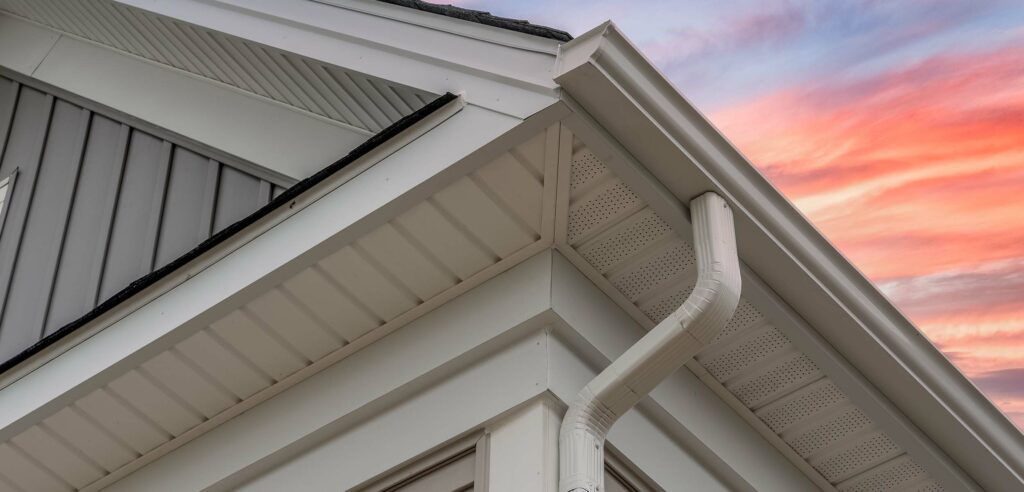
What is a Gutter?
Gutters are a key component of the water drainage system in your home. Usually made from high-quality aluminum, gutters direct water from your home’s roof to safe places on your property. This series of troughs and downspouts are installed on the exterior of the home and control water flow during rain or snowfall.
Properly installed gutters protect your home from water damage, improve ventilation and increase air circulation preventing roof decay. Directing water runoff to strategic locations prevents water from pooling at your home’s foundation.
Not to mention that gutters stop you and your houseguests from getting dripped on with dirty roof water every time you enter or exit your home!
Why Should I Keep My Gutters Clean?
Throughout the winter, snow and ice trap twigs, leaves, and other outdoor muck on your roof. When the snow melts, all this material gets washed into your eavestroughs. So it's normal for your gutters to be clogged or blocked once the spring weather hits.
Clogged gutters can pose a huge problem if left unattended.
When debris builds up, excess water has nowhere to go and starts to rise. The gutters will eventually overflow, causing the water to seep into your roof and siding, which can lead to costly repairs. This overflow will damage your roof's fascia, soffits, and starter shingles.
Large volumes of water can also fall down onto walkways, causing a slippery surface and increasing the risk of falls and injury.
It’s crucial that gutters flow freely and channel water away from these potential problems. The best time to give your gutters a little TLC is just as the winter fades away and the snow turns to rain.
Spring Gutter Prep
Okay, now we know a bit more about gutters and why we should add them to our spring cleaning arsenal. Be advised that prepping your gutters is one of those jobs that is only possible after the temperature rises. At the very least, it’s more enjoyable.
Here are some things you can do to get your eavestroughs spring-ready.
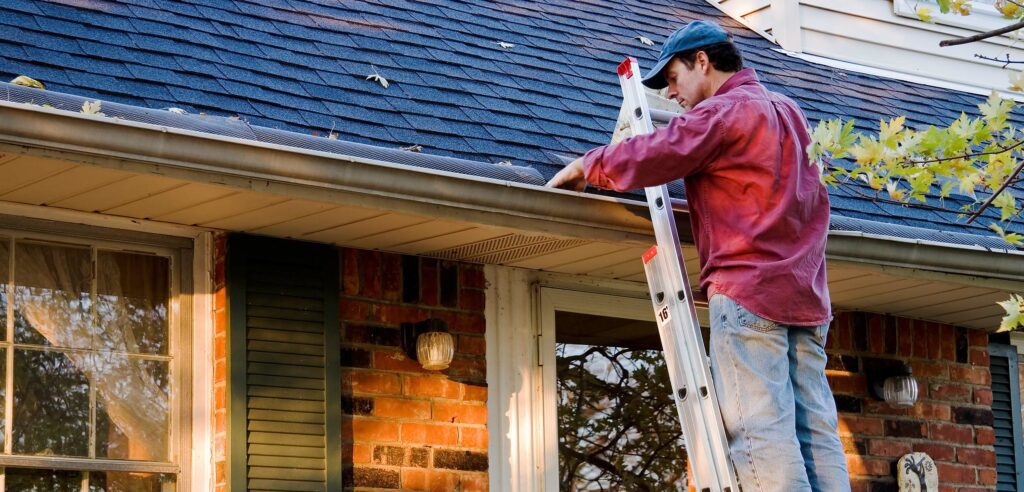
Do A Once Over
Grab a ladder and some work gloves, and take a look at the current state of your gutters. Clear out any large chunks of debris you find, and then pour some water to help clear the smaller, more stubborn bits.
Once they are cleared, look for any cracks or holes that need to be repaired. Small holes can be fixed by applying a waterproof sealant. More significant damage can be patched with transition flashing or aluminum repair roll. Both sealants and repair rolls can be found at most major hardware stores.
Finally, double-check the fasteners on your gutters. Older gutters may become loose and sag over time. Replace or tighten these as necessary, and ensure your gutters are firmly attached to the exterior of your home. They should also slope about a ½ inch for every ten feet toward the downspout.
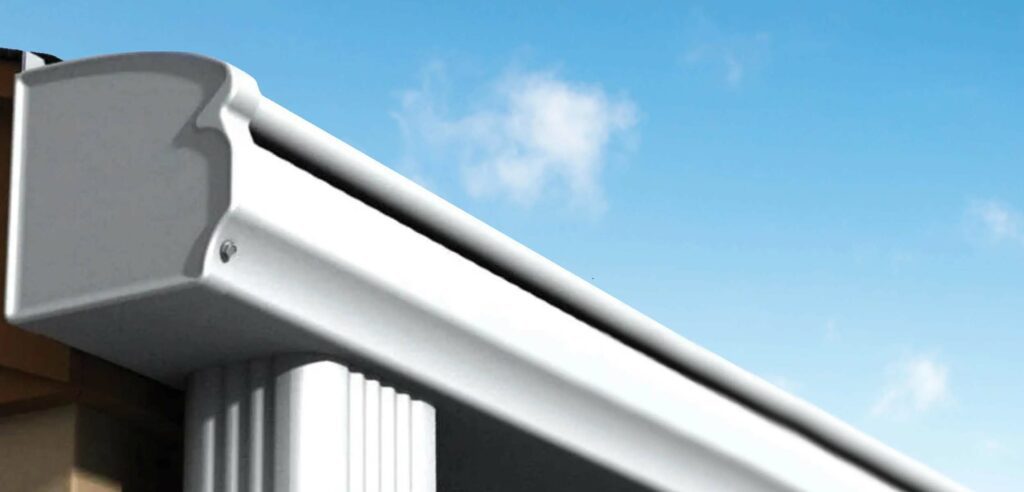
Install a Leaf Guard
Leaf guards help prevent debris from causing clogs in your gutters. For homes without leaf guards, this debris can slide down the roof and into your gutters during rain or windstorms. If the channels become clogged, water can back up and spill over the sides, damaging your home.
Leaf guards protect your gutters against:
- Leaves
- Pine needles
- Twigs
- Debris from animals
- Rocks and small stones
- Mud
A leaf guard essentially eliminates the need for you to clear eavestroughs throughout the spring and summer. But annual roof maintenance should still be performed at the end of every winter.
Different types of leaf guards are available, depending on your eavestrough design. Our roofing specialists can discuss your options and help you make an educated decision.
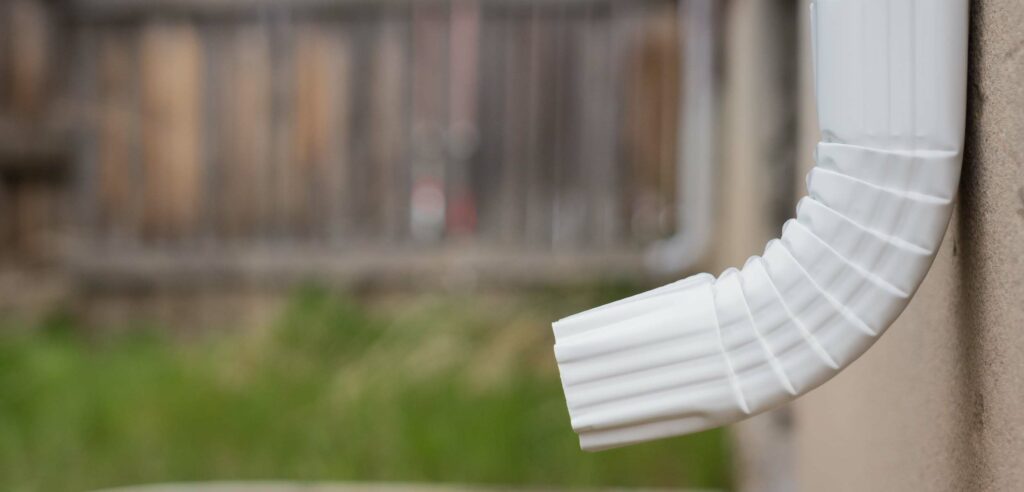
Check Your Downspouts
Your roof’s water drainage system doesn't stop with the gutters! Downspouts are also essential for clearing water off your roof and to the right places.
Downspouts are the metal (usually aluminum) tubes that run along the side of your home and connect to the drain in your gutter. The bottom section of your downspout is usually adjustable and can be placed in an area appropriate for water run-off.
A simple flow test can be done by pouring water into your gutter and seeing if liquid exits the downspout opening. Check your downspouts for the following issues if the flow is impeded:
- Warping due to freezing
- Blockages
- Damaged openings
- Cracks or holes
If a downspout is significantly damaged, it’s best to simply replace this part. Typically, downspouts are affordable and available at your local home improvement store. Alternatively, your roofing contractor can replace your downspouts during your annual roof inspection.
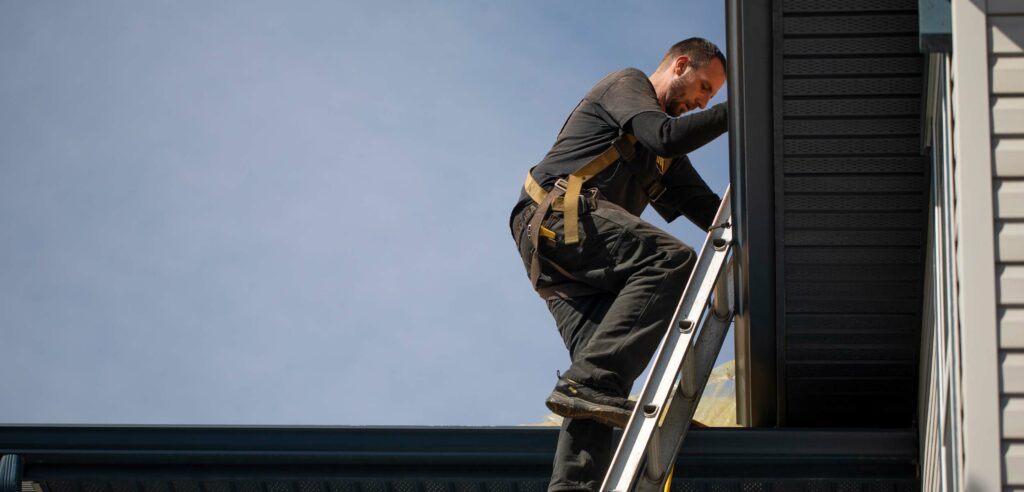
Bring In The Professionals
Although some gutter prep work and repairs can be done with your own tools, it’s worth calling a local professional for bigger jobs or if anything seems amiss. Cleaning gutters isn’t the most glorious job, but it’s an important part of getting your home and yard spring-ready.
The home exterior specialists at Guns N Hoses Roofing are insured for the risks of roof repair and provide an industry-leading 5-year workmanship guarantee on gutter restorations and upgrades.
We also offer various financing options to help you get the roofing repair, replacement, or inspection you need in a timely manner.
Spring Into Spring With Clean Gutters!
These gutter maintenance basics will prevent water from collecting where you don’t want it to. To keep your entryways dry and your roof in top condition, your gutters need to be clear and free from debris.
If you’re not into tackling gutter maintenance alone, you can always call Guns N Hoses Roofing for professional roofing services. One way or another, make sure that your gutters are getting the attention they need to stave off water problems for another year.
8 Common Causes of a Leaky Roof
A roof is one of the most important parts of your home. It keeps your family and belongings safe and dry. Unfortunately, roofs can develop problems, especially in the unpredictable climate of Alberta. This can lead to leaks and water damage.
Half the battle of fixing a leaky roof is understanding the root cause. Let's discuss 8 common reasons for leaky roofs in Calgary. We'll also provide tips on how to prevent these problems from occurring again
Leaving a leak unattended is never a wise option. Get in touch with our team to get professional roofing advice about how to stop your leaky roof from dripping. We’ll get back to you within 24 hours and can always schedule a roof repair if your roof isn’t holding up.
Why Are Roof Leaks Dangerous?
A roof leak can be dangerous for a few reasons. First of all, an unattended leak can damage your roofing materials and shorten the life of your roof. Second, a roof leak can cause water damage to your home's interior. This can lead to costly repairs down the road.
Finally, if you have a roof leak in the wintertime, it could lead to an ice dam forming. An ice dam can cause even more extensive water damage to your home.
Addressing even the smallest leak right away is always the wisest course of action. Professional repairs prevent little drips from becoming big disasters. So give us a call at the first sign of water leaking through your roof.
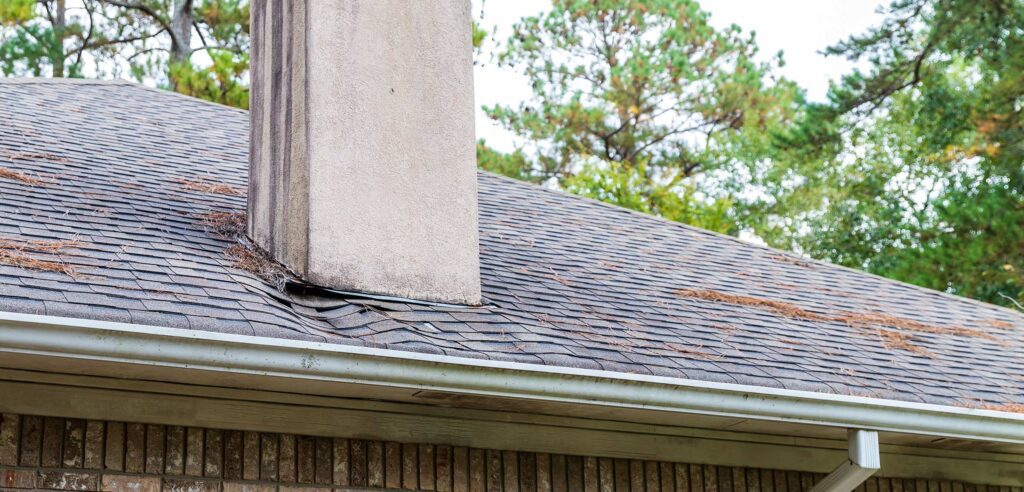
Common Causes of Roof Leaks
Many things can go wrong with a roof and cause it to leak. Here are some of the most common roofing problems that cause leaks and drips around your home
Ice Dam Buildup
Ice dams are a common roofing problem in Alberta. An ice dam occurs when snow and ice build up along your roof's edge. This prevents water from draining properly off of your roof, which can cause leaks to develop. Ice dams often form due to poor ventilation in the attic space of an older home
If you have an older home with no insulation in the ceiling or inadequate insulation, heat rising from your living spaces may melt any snow on top of your roof. That snow will then refreeze along the edges when it reaches colder temperatures at the exterior. This causes an ice dam to form on your roof's edge.
The best way to prevent an ice dam is by properly insulating your attic space and ensuring that there is proper ventilation. You can also install Heat-Line to melt the snow and ice before it has a chance to cause problems.
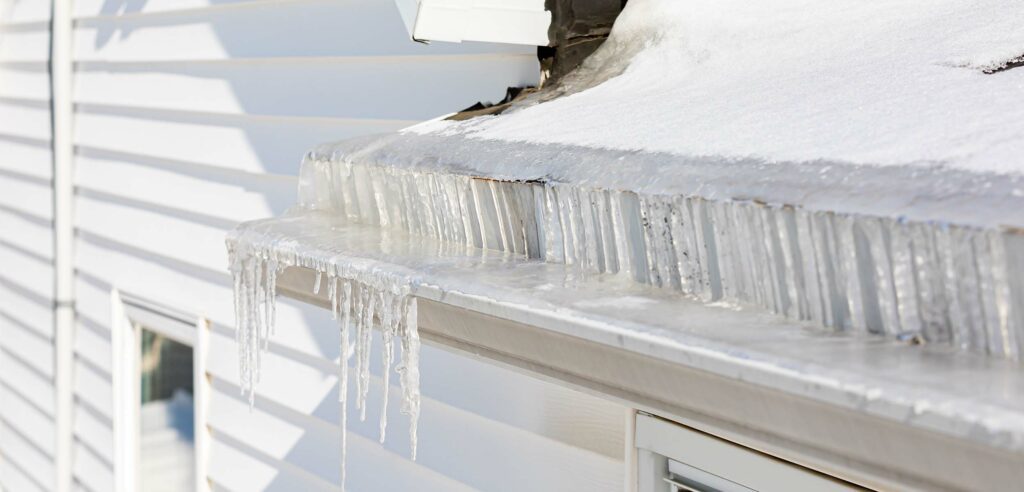
Cracked Flashing
Flashing is a metal strip installed around roofing materials where they meet walls, chimneys, or other roofing elements. It helps seal the roofing material and prevents water from seeping into the seams. If flashing is not installed correctly, cracked, or missing altogether, water will be able to leak through these areas.
Even the smallest leaks slowly damage your roofing materials and infrastructure. The best way to prevent this problem is by having your roof inspected regularly by professionals who know what unhealthy flashing looks like.
Missing or Loose Shingles
Shingles are one of the most common roofing materials and standard for most residential construction in Alberta. But even weather-resistant shingles can be damaged by wind, rain, or hail over time. In fact, more than ½ of all hail damage in Canada occurs in Alberta.
If shingles are missing or loose, water will be able to seep through these areas and cause roof damage. Make sure to inspect your roof following major hail storms. And have a professional roofer repair any damaged shingles immediately.
Clogged Gutters
If your gutters are not properly maintained, they can easily become clogged with debris like leaves, sticks, and ice. This blocks proper drainage of water off of your roof during a storm or snowmelt. And water that isn’t draining is a risk for causing leaks.
Regular maintenance and cleaning of gutters, eavestroughs, and fascia is every homeowner’s responsibility. Annual gutter inspections are one of the easiest ways to keep your roof’s drainage channels open and flowing. Consider installing a leaf guard if your property has lots of trees or you live in a windy area.
Roof Valleys Not Sealed
Valleys are roofing elements that help channel water from one side of the roof to another. If valleys become damaged or clogged with debris, water will pool and potentially leak into your home. A faulty seal can also lead to drips in your attic.
Keeping valleys clear and sloped properly is another part of annual roof maintenance. Valleys should be evaluated before (or during) every winter to avoid pools becoming giant hunks of ice.
Cracks in Your Chimney
If your roof has a chimney, it will be especially susceptible to roof leaks. Cracks in the roof around your chimney can cause roof damage over time as water seeps through. Look for holes in the mortared areas of your chimney or wear and tear along the top.
For some, fixing a chimney crack simply means replacing the worn or missing mortar (cement type mixture used during stone or brickwork). In other cases, a leak near your chimney could be flashing or shingles that have come loose.
Chimney repairs are very particular and always best managed by our experts at Guns N Hoses.
Worn Seals Around Skylights or Windows
If you have skylights in your home your roof is more susceptible to leaks! Skylights are a common source of roof leaks because they often have seals that wear out over time due to exposure from sun and rain.
Minor leaks in skylight seals can be fixed with some silicone sealant and a steady hand. If you notice a drip near a skylight or window, start with this method. But leaks that are always dripping, have significant water flow, or won’t stop after applying sealant, should be looked at by the pros.
Problems with Roof Vents
Roof vents are those little pipes jutting out of your roof. They take moisture out of your home, preventing it from causing problems to the interior. If the seals around roof vents become worn out over time, water will be able to leak into your home and cause roof damage.
In Alberta, with its sudden storms and frequent chinooks, adequate roof ventilation is essential. Let our team make sure your roof vents are equipped for the rest of the year. Gun N Hoses ventilation warranties also cover ventilation work that goes below your roof.
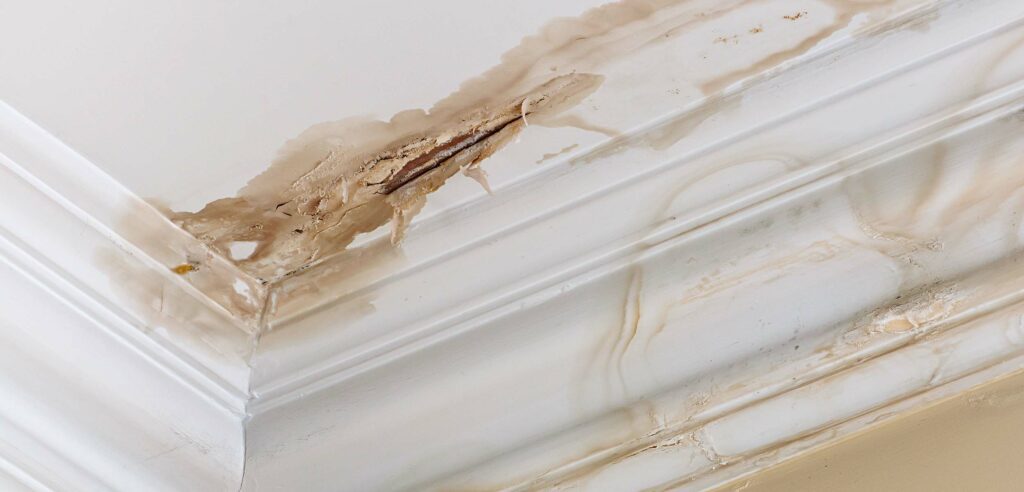
Roof Repairs: Better Sooner Than Later
A roof leak can be a serious problem for any homeowner. If you think that your roof has been leaking or the signs are obvious, it's important to contact a roofing professional immediately.
Never ignore a roof leak and be aware of the trouble areas that your roof may be vulnerable to. By taking care of roof leaks quickly, you'll save money on repairs later down the road!
Leaf guards play a critical role in helping you maintain your home, but many people are unaware of just how useful these fixtures are. So, how can a leaf guard make your life easier and your home safer?
Let us tell you a few things about different types of leaf guards and how they work. Our years of service to homeowners in Calgary, Okotoks, and the surrounding communities have taught us a lot about what leaf guards can accomplish in these areas, and now it’s time to share the knowledge with you so you can take steps to protect the home you love.
What is a Leaf Guard?
Leaf guards help prevent debris from causing clogs in your gutters. On homes without leaf guards, this debris can slide down the roof and into your gutters during rain or windstorms. If the gutters become clogged while it’s raining, water can back up and spill over the sides, damaging the walls and foundations of your home.
In addition to leaves, many leaf guard can also catch:
- Pine needles
- Acorns
- Twigs
- Other material brought by animals to build nests
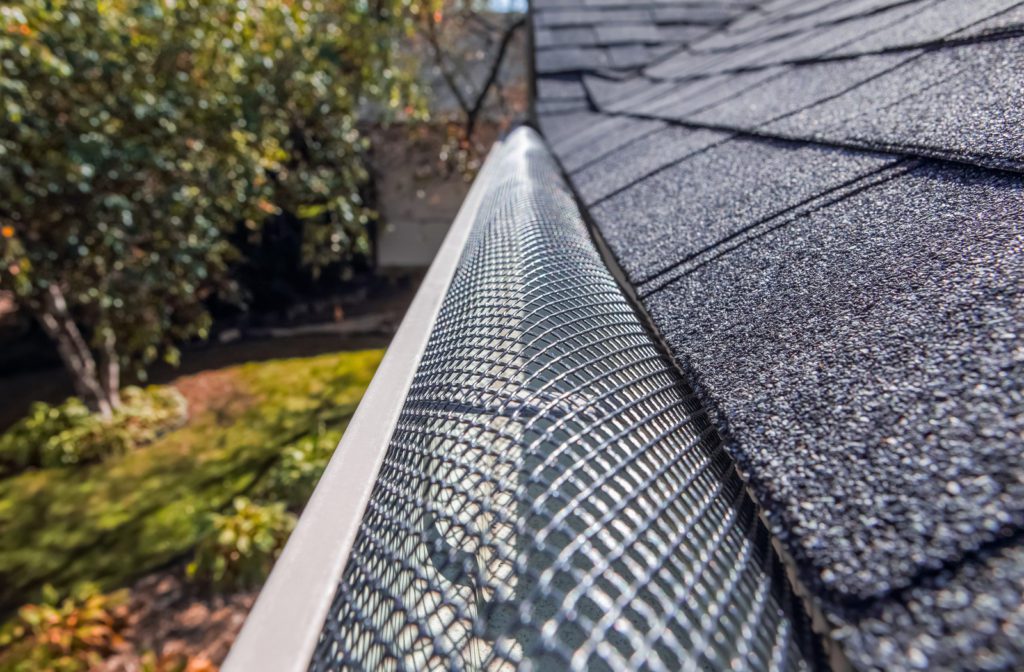
Different Types of Leaf Guards
Not all leaf guards are the same. There are 5 main types of leaf guards, each with their own pros and cons.
Screen Guards
Screen guards represent an inexpensive and easy-to-install option for homeowners who want basic protection for their gutters. These thin sheets of wire mesh or plastic can simply be slid underneath the shingles on the edge of the roof, which weigh them down and keep them positioned over the tops of your gutters.
However, be advised that screen guards can sometimes come loose during inclement weather. Tampering with your shingles may also void the warranty on your roof, so always ask a licensed roofing contractor about screen guards before attempting to install them yourself.
Micro Mesh Guards
These leaf guards follow the same basic principle as screen guards, in that they involve covering the openings of your gutters with mesh that lets water run through while stopping solid debris. However, micro mesh guards have smaller openings and can often be installed by snapping the guard to the top of the gutter directly.
Other micro mesh guards can be installed by connecting a flange to the fascia of your roof. If you invest in micro mesh guards, make sure to clean them occasionally by using a garden sprayer and a brush to remove material that may become trapped in the ultra-small holes (such as dirt and dust).
Reverse Curve Guards
Reverse curve guards are designed with a bend that allows water to flow around the guard and into the gutter while guiding larger debris to the edge of the roof, where it can safely slide off. These gutters are generally well-engineered, high-quality roofing accessories that are effective at keeping gutters clear even in yards with plenty of trees.
Reverse curve gutters can also be more expensive than other kinds, and they’re generally more complicated to install. Investing in this type of leaf guard for your home is an excellent way to keep your gutters free from clogs and enjoy the peace of mind that comes with knowing an overflowing gutter won’t cause water damage to your home.
Brush Guards
Brush guards are about as low-tech as leaf guards get, but they can still be pretty effective. These budget-friendly guards resemble large pipe-cleaners that you can easily insert lengthwise into your gutters to block large debris from settling in them.
Brush guards won’t protect your gutters from small particles that accumulate in your gutters over time, though. These guards are far better than nothing, but for total protection, you’ll want to opt for something more precise.
Foam Guards
These guards are essentially big, long, toblerone-shaped blocks of foam that sit point-down inside your gutters with the flat side leaning out towards the roof to block debris. Water can still trickle through the foam into the gutters, making these effective and cheap gutter guards.
Why Leaf Guards Matter
Purchasing gutter guards might seem unnecessary, but the costs associated with water damage are much higher—often totalling thousands of dollars. Instead of risking that kind of expense, it’s much better to buy effective gutter guards and have them professionally installed to ensure they will function properly.
Have more questions about gutter guards and what kind to buy for your home? Contact your local roofing contractors today and let a professional answer your questions.
Are you tired of slipping on ice in your driveway? Are you fed up with water dripping all over the front step? The lawn is flooding and the darn gutter won’t drain right? So fix it!
Reliable gutter services are more affordable than you think! Don’t get caught in the cold November rain. Learn how roofing professionals fix your gutter and ways to solve the problem yourself.
Gutter Leaks Are Bad
If you’re not totally sure what a gutter is (or eavestroughs, for us Canadians), it can be simply described as a roofing drainage system. Gutters direct water from your home’s roof to safe places on your property. This series of troughs and downspouts are affixed to the exterior of the home and control water flow during rain or snowfall.
Leaking or Clogged?
Depending on waterfall patterns, you may have a clogged gutter, as opposed to actual holes or leaks. It is very common for falling leaves to build-up in a gutter and clog drainage channels, especially during the autumn months. The major clue to indicate a clog is water pouring over the top of the eavestrough, as if a mini-dam is being made. Adding a Leaf Guard to your home’s exterior can eliminate most potential clogs.
Safely climb a ladder and take a look into the gutter to make sure it’s not a jungle. Remove any leaves, dirt, debris, or other muck to identify any obvious holes or tears. Test the trouble spot by pouring water along your eavestrough. If water continues to drip from below or through the gutter, then you have a leak and it’s time to take action.
Leaky Liabilities
Anyone familiar with Alberta winters knows that sudden temperature drops turn puddles into sheets of ice very quickly. Positive temperature swings melt ice and increase roof runoff. Mismanaged gutters can leak all over your sidewalk, along the driveway, and onto your front step.
Inconvenient and potentially dangerous icicles may form from slow gutter leaks. Nobody wants to see their sweet child slip on ice or get donked by an icicle. Remember that summer gutter leaks can turn into more serious winter problems.
One of the biggest risks a leaky gutter presents is flooding. Misdirected roof water can pool in dangerous places on your property and destroy lawns and landscaping. In worst-case scenarios, water can flood your basement, with average costs reaching upwards of $43,000. Although you can’t control the weather, you can help prepare your home with gutters that are secure and leak-free.
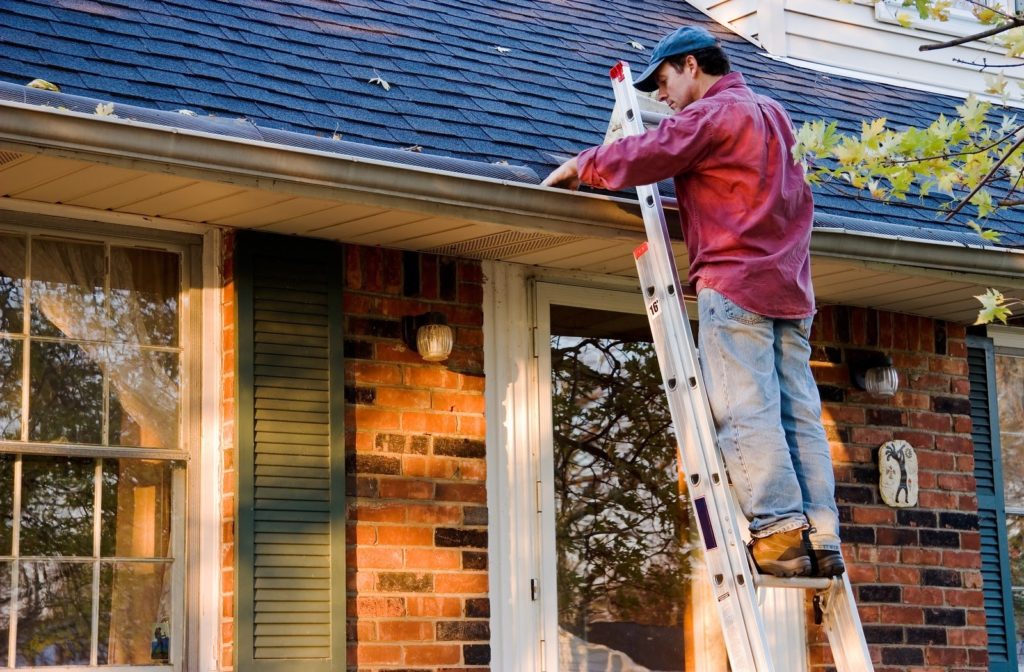
Do-It-Yourself Method
These are steps for a simple gutter repair. If you notice multiple gutter leaks, or that leaks frequently come about, it is likely time for a replacement. More complicated jobs are best coordinated with experienced roofing and home exterior experts.
Tools for The Job
Here is a list of tools and materials that will make a DIY gutter fix smooth and timely:
- Ladder (10ft working height)
- Tin snips
- Power drill
- Wire brush or paint scraper
- Abrasive pad or coarse sandpaper
- Transition flashing
- Waterproof silicone or caulk
Step 1: Prep the Area
First remove debris and crud from the gutter. Depending on where the leak is, you may need to unscrew a joint or bracket. Use a wire brush to further clean around the leak. Rough up this section of gutter with the abrasive pad, as more texture will help the seal.
Step 2: Seal Small Holes
Small holes or tears in the gutter can be resolved by applying a waterproof sealant. We are talking about holes no bigger than a nail head. Make sure the silicon completely fills the hole, tear, or crack, and allow it to dry.
Step 3: Patch Large Holes
For larger holes or slashes, you will be patching the gutter with transition flashing or aluminum repair roll. Cut a piece of material larger than the hole itself and place it inside the gutter, forming to the shape of the trough. Use sealant along all borders where the flashing meets the original gutter, making sure there are no gaps. You will need just a little patience as the silicon dries.
Step 4: Double Check the Fasteners
Your gutter may be attached with clips, spikes, or screwed in brackets. Older gutters may sag or become loose over time. Make sure the eavestrough is firmly attached to your home’s exterior and that the gutter slopes about a ½ inch for every 10 feet towards your downspout.
Step 5: Wait for Rain
Make sure to monitor what were once the leaky parts of your gutter. You want to ensure any DIY fix can withstand heavy rains and harsh weather. If problems persist, get experienced professionals on-site.
Leave It to a Pro
Although some leaks can be fixed with home tools and a ladder, it is definitely worth calling a local pro for quotes on gutter repairs. Home exterior specialists are insured for the risks of roof repair and almost always provide warranties for gutter restorations and upgrades. Professionals may also have suggestions for solutions that best suit your regional climate.
What is a Leaf Guard?
A Leaf Guard is a system that protects your gutter from excess debris and leaf build-up. Material is strategically placed over top of the eavestrough, preventing solid materials from drifting in, but allowing water to runoff. This addition can be installed on existing gutters and is highly recommended when clogs are common.
Unintentional roof runoff can flood your lawn and kill your grass- or worse! Expert gutter installation and repairs (including downspout placement) produce a landscaping paradise where the grass is green.
What is Heat-Line?
For those that live in colder climates, it is worth considering Heat-Line installation. Preventing ice build-up during winter months limits trough expansion. This occurs when ice unevenly expands in the gutter and destroys joints in the eavestrough. Heat-Line treatment will help prevent leaks and prolong the life of your home’s gutter.
No More Leaks, No More Tears
Whether you fix a leaky gutter yourself or consult with a professional, there are so many benefits to keeping your eavestroughs maintained. Improved gutters mean better aesthetics and safety when someone comes a knock, knock, knockin on your door. Efficient eavestroughs can naturally irrigate your lawn and prevent bigger homeowner headaches.
After all, everyone deserves a leak-free gutter to live and let dry!
